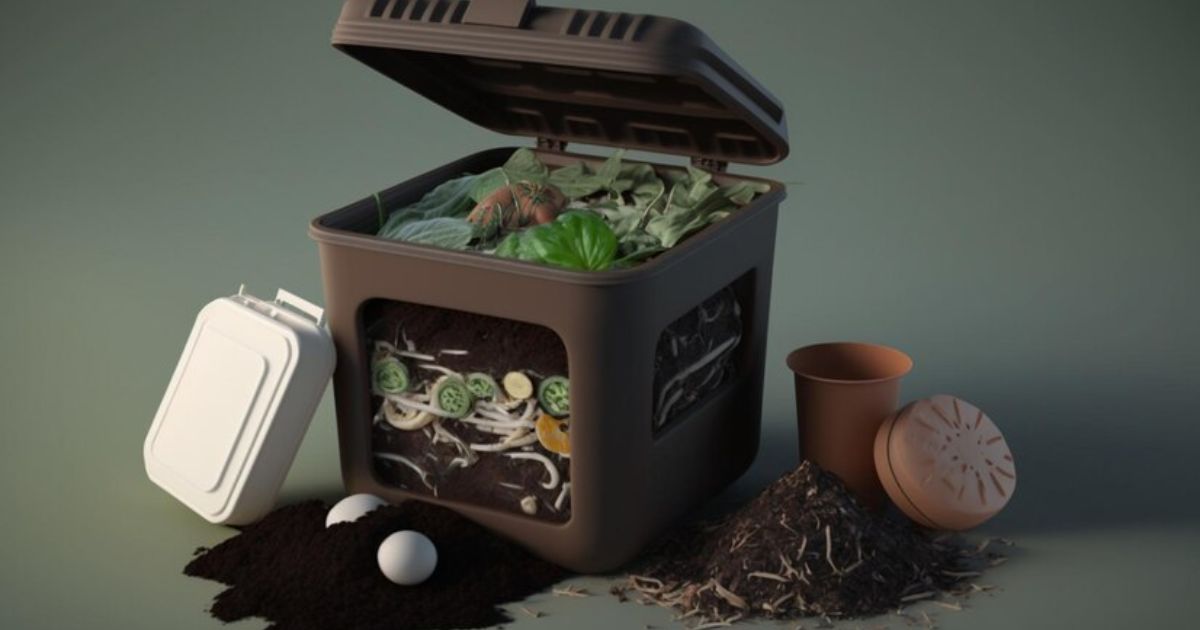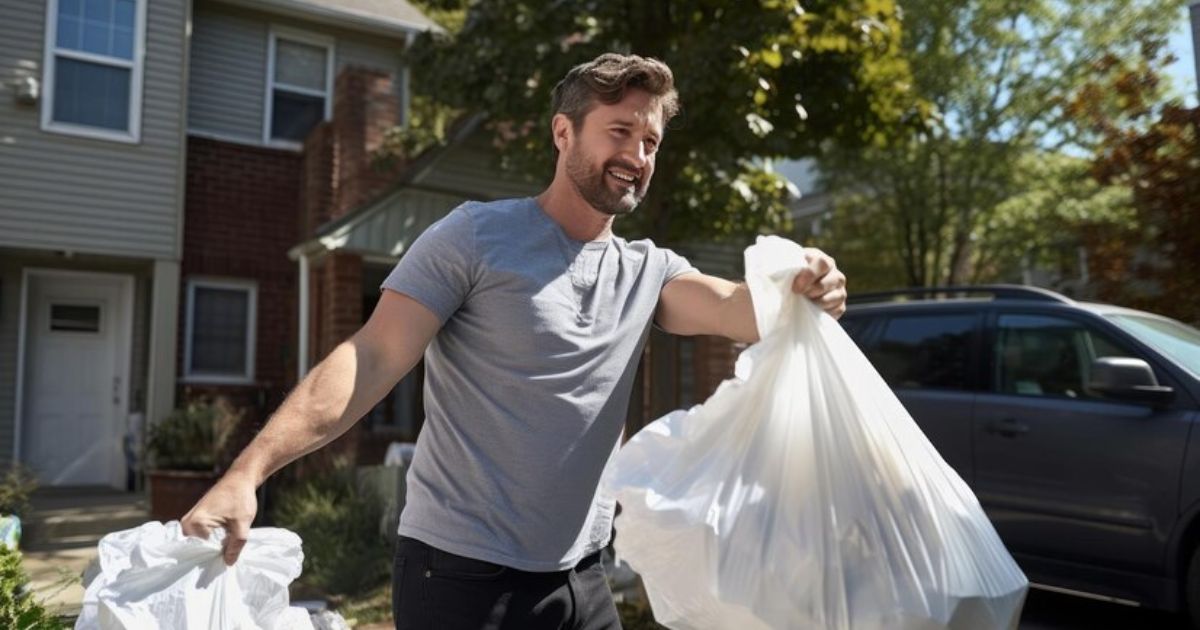In a world teeming with waste, finding the optimal storage solution for garbage can seem like a daunting task. Fear not, for this article presents a comprehensive guide on the best way to store your refuse. Through a technical, analytical, and solution-oriented approach, we will explore strategies such as proper waste separation, recycling practices, and the utilization of composting and storage methods. Join us on this journey towards a cleaner and more sustainable future.
Key Takeaways
- Proper waste segregation is essential for effective garbage storage.
- Sturdy garbage bags should be used to prevent leakage and tearing.
- Garbage should be stored in sealed containers to reduce odors and prevent pests.
- Incorporating greenery in waste storage areas can improve air quality and create visually appealing spaces.
Separate Waste Into Proper Bins
The first step in properly storing garbage is to separate waste into the appropriate bins. This fundamental practice plays a crucial role in waste management and ensures that different types of waste are appropriately disposed of.
By segregating waste into specific bins designated for organic, recyclable, and non-recyclable materials, individuals can contribute to a more efficient and sustainable waste management system. Organic waste, such as food scraps and yard trimmings, can be composted, while recyclable materials like paper, plastic, and glass can be sent for recycling.
Non-recyclable waste, on the other hand, should be placed in bins designated for landfill disposal. Proper waste separation not only promotes environmental conservation but also reduces contamination and supports resource recovery initiatives. By following this simple yet impactful step, individuals can actively participate in creating a cleaner and healthier living environment.
Recycle as Much as Possible
To maximize waste management efficiency and promote environmental sustainability, it is essential to prioritize recycling as much as possible. Recycling plays a crucial role in reducing the volume of waste that ends up in landfills and incinerators.
By recycling materials such as paper, plastic, glass, and metal, we can conserve natural resources, save energy, and reduce greenhouse gas emissions. To achieve maximum recycling rates, it is important to implement effective recycling programs that educate and engage the community.
This can include providing clear instructions on what can and cannot be recycled, offering convenient recycling drop-off points, and encouraging businesses to use recycled materials in their production processes. Additionally, promoting the use of recycled products can create a sense of belonging and pride in contributing to a more sustainable future.
Use Paper Bags for Shopping
Implementing the practice of using paper bags for shopping can further contribute to waste reduction and promote sustainability. Paper bags are an eco-friendly alternative to plastic bags, as they are biodegradable and can be easily recycled. Here are four reasons why using paper bags for shopping is a beneficial choice:
- Environmentally friendly: Paper bags are made from renewable resources and have a lower environmental impact compared to plastic bags.
- Reduce waste: By using paper bags, we can minimize the amount of plastic waste produced, helping to reduce pollution and litter.
- Promote sustainability: Choosing paper bags supports sustainable forestry practices and encourages responsible sourcing of raw materials.
- Support local businesses: Many local retailers and grocery stores offer paper bags as an alternative to plastic, and by using them, we can support these businesses and contribute to the local economy.
Take Out Trash Before Pickup
When considering the best way to store garbage, it is important to prioritize taking out the trash before pickup to maintain cleanliness and prevent odor buildup. By removing the trash from your home or office before the scheduled pickup, you can ensure a hygienic and pleasant environment.
This practice not only prevents the accumulation of waste but also minimizes the risk of pests and rodents. To help you stay organized and effectively manage your trash disposal, consider implementing the following strategies:
| Strategies | Benefits |
|---|---|
| Create a schedule | Ensures regular disposal |
| Use sturdy garbage bags | Prevents leakage and tearing |
| Seal bags tightly | Reduces odors and prevents pests |
| Store garbage in a designated area | Maintains cleanliness and hygiene |
Create a Compost Pile
One effective method for managing organic waste is by creating a compost pile, which allows for the natural decomposition of food scraps and yard waste. Composting not only helps reduce the amount of waste going to landfills but also produces valuable nutrient-rich soil amendments. Here are some key benefits of creating a compost pile:
- Sustainable waste management: Composting reduces the environmental impact of organic waste by diverting it from landfills.
- Natural fertilizer: The resulting compost can be used to enrich soil and promote healthy plant growth.
- Cost-effective: Composting at home eliminates the need to purchase expensive chemical fertilizers.
- Community building: Composting can bring people together, fostering a sense of belonging and shared commitment to environmental stewardship.
Fill an Unused Cabinet
To efficiently store garbage, consider utilizing a single unused cabinet in your home. This solution provides a designated space for garbage disposal, minimizing clutter and maintaining a clean living environment repurposing an unused cabinet, you create a dedicated area for garbage storage, prevent.
Biting odors and pests from spreading throughout your home. The cabinet should be lined with a trash bag or bin to contain the waste effectively. Additionally, consider installing a ventilation system to minimize odor buildup.
This solution is particularly useful for individuals who desire a neat and organized living space, as it allows garbage to be discreetly stored away. However, if you require additional storage or have limited cabinet space, the next section will discuss the option of storing garbage in the garage.
Store in the Garage
An effective method for storing garbage is by utilizing a designated area in the garage. This solution offers several benefits for individuals who desire a clean and organized living space:
- Maximizes indoor space: Storing garbage in the garage prevents odors and potential messes from infiltrating the main living areas.
- Easy disposal: With a designated area in the garage, it becomes convenient to dispose of trash without having to travel far or make multiple trips.
- Reduced risk of pests: Properly storing garbage in sealed containers within the garage minimizes the chances of attracting pests such as rodents or insects.
- Enhanced aesthetics: Keeping garbage out of sight in the garage, helps maintain a visually appealing and clutter-free environment within the home.
Utilizing the garage as a storage space for garbage ensures a sense of belonging in a clean and well-organized living space.
Use Greenery
Employing greenery as an integral component of waste management systems emerges as a practical and environmentally friendly strategy. By seamlessly integrating plants and trees into our approach to waste disposal, we not only mitigate the adverse effects of waste on the environment but also cultivate a more aesthetically pleasing and sustainable living environment. This innovative approach not only addresses the challenge of waste disposal but also tackles the broader issue of Trash Bad for Humans by fostering a harmonious coexistence between nature and our daily lives.
One way to incorporate greenery into waste management is through the use of composting. Composting allows organic waste to be broken down naturally, turning it into nutrient-rich soil that can be used to nourish plants and gardens. This not only helps to divert waste from landfills but also reduces the need for chemical fertilizers.
Another option is to incorporate green roofs or living walls into waste storage areas. These greenery installations not only provide a visually appealing space but also help to absorb and filter pollutants from the air, improving air quality and creating a healthier living environment.
By embracing greenery as a solution for storing garbage, we can create a more sustainable and harmonious living environment while reducing our ecological footprint.
| Pros | Cons |
|---|---|
| – Reduces waste going to landfills | – Requires space and maintenance |
| – Provides nutrient-rich soil for plants | – May attract pests |
| – Improves air quality | – Requires proper knowledge and training |
| – Creates aesthetically pleasing spaces | – May not be suitable for all climates |
| – Reduces the need for chemical fertilizers | – Requires proper waste segregation and management |
Conclusion
In conclusion, when it comes to storing garbage, the best way is to separate waste into proper bins, recycle as much as possible, use paper bags for shopping, take out trash before pickup, create a compost pile, fill an unused cabinet, store in the garage, or utilize greenery. By following these solution-oriented techniques, we can efficiently manage our garbage and contribute to a cleaner and more sustainable environment. So, let’s embrace these methods and show our trash who’s boss.











